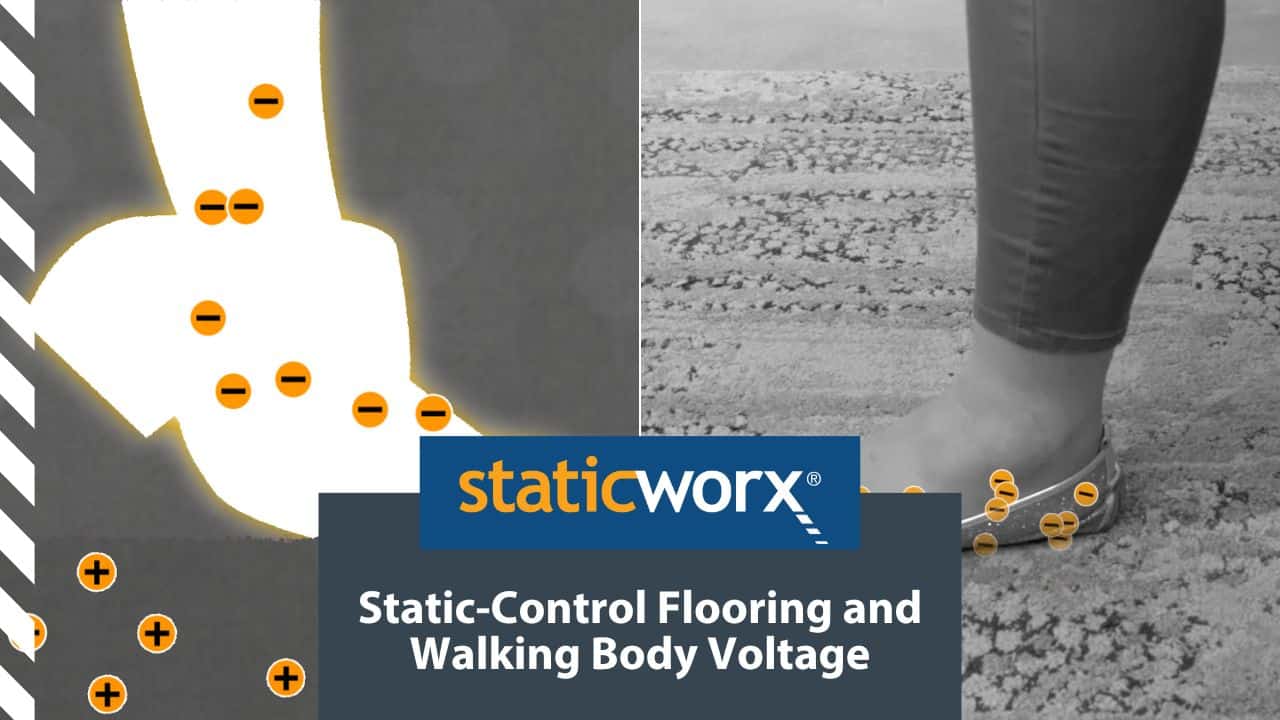
Video: What is Electrostatic Discharge (ESD) Flooring?
FEBRUARY 4, 2011
Learn about ESD Flooring options in this short video.
Visit our Learning Center to read more about what ESD flooring is and how it works.
For help or advice about choosing an ESD floor, call us on 617-923-2000, email [email protected], or visit our Guide to ESD Flooring Selection.
What is ESD? That’s probably the first question I get asked by any designer or architect.
ESD is the acronym for electrostatic discharge.
Essentially what we’re talking about is the ability for a person to move their body while they walk on a floor, generate a charge, store that charge and when they actually release that charge to another object–whether it’s an electronic component, a person, a doorknob, that’s when the electrostatic discharge takes place.
What most people don’t realize about static is that in order to feel a static discharge you’re generating close to 3500 volts. The problem we have when protecting electronics, is electronic devices are actually sensitive to as little as 5 or 10 volts of static. That means that the problem we’re trying to cure is invisible and because people tend to view the world through their own lens they don’t know they have a static problem because they’re not getting a shock. Unfortunately, electronic components as sensitive as they are, are being destroyed, degraded, and damaged without us even realizing it.
ESD flooring can come in almost any form. What I’ve got in my hand right now is a solid vinyl tile. If you notice, there’s little veins in the tile. Those veins contain carbon. Carbon’s a conductor. If a static charge touches the outside of the tile, the charge is transported through the veins to an adhesive underneath this tile.
So when we talk about ESD flooring, we could be talking about vinyl tile, we could be talking about carpet with carbon fibers, we could be talking about special epoxies with carbon fibers, we could be talking about rubber. Almost any form of flooring that you can imagine we have a way to render it into a static free floor.
But really the biggest consideration is safety. One of the things we’ve discovered in our audits of flooring installations is a lot of times people are putting flooring in that’s not safe. It’s too conductive. The problem with something that’s too conductive, means people are at risk.
The floor has to be properly grounded, has to be tested after it’s installed, and we have to know with certainty that the conductivity of the floor meets certain OSHA and NFPA safety standards.
If you’re looking for more detailed information, go onto our website and go to the knowledge center at [www.staticworx.com] or you can call me personally at [617-923-2000].
Learning Center Articles
- ESD Basics
- Installation & Maintenance
- Selecting & Specifying an ESD Floor
- Technical Information
- 7 Common Mistakes Selecting an ESD floor
- A Guide to ESD Flooring Selection
- Avoid Costly Failures: What You Need to Know When Specifying ESD Flooring
- Choosing ESD Flooring for:
- ESD Footwear: What Is It and When Is It Necessary?
- ESD Footwear for Electronics Manufacturing and Handling Applications
- Facility Managers’ Guide to Selecting ESD Flooring
- The Need for Due Diligence in Specifying Static-Free Flooring
- Standard of Care for Specifying Floors in Mission-Critical Spaces
- Understanding the Hidden Costs of ESD Flooring

StaticWorx high-performance static-control floors protect electronic components, explosives, and high-speed computers from damage caused by static electricity. ESD flooring is part of a system. Choices should always be based on objective, researched evidence. When you partner with us, we look at all possible items that may need to integrate with the floor, and, focusing on your goals and objectives, help you find the right floor for your application.










